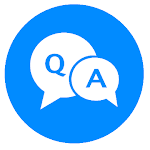Exploring Point of View (POV)
Point of view (POV) is one of the more basic yet most crucial elements that goes into all narrative fiction – not merely prose fiction, but film, drama, and general storytelling as well. Point of view essentially encompasses who is telling the story and to what degree they are aware of events as they unfold. It isn’t merely a technical detail; knowing the nature of POV in every given novel affects how the reader engages with characters and events. It frames what is significant in a story. In this article, we’ll take a closer look at what exactly point of view is, the various kinds of POV there are, why it’s important, and how it serves fiction.
Unraveling Point of View: A Window into Narration
Point of view is what perspective the narrator or the characters tells the story from, telling us what to know and how to feel about it.
Types of Point of View:
First person POV: The narrator speaks as ‘I’; the audience is privy to the character’s thoughts, feelings, or memories: ‘I walked down the quiet street.’
Second person POV: Uncommon in fiction, the narrator speaks to the reader as if they are a character, putting them into the context of the story: ‘You stand at the crossroads.’
Third Person Limited POV: The narrator knows only the thoughts and feelings of one protagonist, and is described on the basis of that single character, usually third-person singular. Example: ‘She watched from the window as the rain fell.
Third Person Omniscient POV: The narrator is privy to the thoughts and reactions of several characters, yielding a more panoramic view. ‘John was nervous. Mary was excited.
Significance of Point of View:
POV can offer us greater access to a character’s psyche, and thus an intimacy with what motivates and troubles her.
Narrative Bias: Different perspectives allow for bias, increasing the complexity of the story and forcing the reader to examine his or her assumptions.
Impact on Storytelling:
Empathy and Identification: POV draws readers into characters' shoes, fostering empathy and emotional investment.
Revealing Information: Manipulating POV can control the release of information, adding suspense and surprise.
Point of View in Film and Television:
Visual POV: Cameras offer omniscience but at the expense of immersion. Camera angles and shots that follow and telegraph characters’ actions mimic literary points of view and trigger empathetic responses within us.
Narration or voiceover: film uses voiceover or character narration to relay inner thoughts and feelings; this is similar to literary POV.
Navigating Different Mediums:
Interactive Storytelling: In video games and other forms of interactive narratives, POV can swing back and forth, depending on choices made by the player – and so, shape the narrative that unfolds.
Blogs and personal writing: Through the use of first-person POV, blogs lend a sense of direct perception with an intimate touch that connects readers to personal experience.
The Multifaceted Lens of Point of View
In short, point of view is a potent storytelling instrument that can be used to shape tales, provoke feelings and provide insights. In literature, film or interactive storytelling, a POV choice determines how audiences will interact with characters and events. This serves as one reason why point of view is such an essential element of story. To know the ins and outs of point of view is to understand how, through narrative voice, a narrator and a reader are waltzing together. It’s to gain an appreciation for the ways that tales can be told.
Other related questions:
- What is osmosis? Its Definition, Mechanism, and Biological Significance
- What is cell? Their Structure, Functions, and Importance in Biology
- What is mass? Its Definition, Measurement, and Role in Physics
- What is fascism? Its Origins, Characteristics, and Historical Impact
- What is a simp? Its Meaning, Origin, and Cultural Implications

.png)